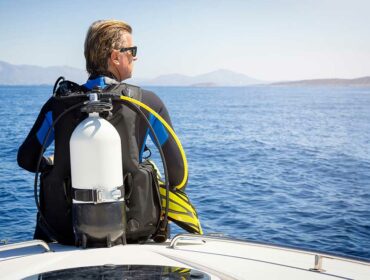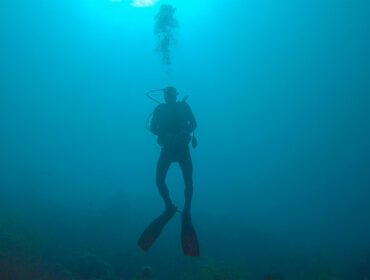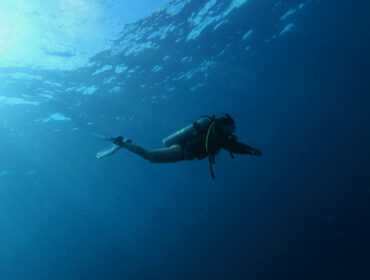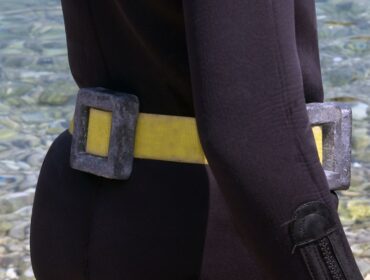Proper weighting allows us to sink below the surface at the beginning of the dive and easily adjust our buoyancy using our BCD throughout the dive. However, for any diver who has found themselves inexplicably in a head-up or head-down position, a simple solution is the use of trim weights.
What Are Trim Weights?
Trim weights are weights added to your body or equipment to help establish proper positioning in the water, also known as trim. In an ideal situation, a diver would always be horizontal in the water with knees slightly bent so fins don’t kick up silt or marine life along the bottom.
Unfortunately, due to buoyancy characteristics in the human body and in dive gear, this isn’t always easy for all divers, especially new divers. Trim weights help to compensate for gear or body-related buoyancy issues.
Types of Trim Weights
Trim weights typically come in pouches or ankle weights, but specialized trim weights are also available.
Pouches are easy to use because they allow you to use any weights you already have, most frequently in sizes from 2 pounds to 5 pounds. When looking to adjust trim, 2 pounds can make a dramatic difference.
A standard weight pouch like the above can be quickly and easily added to any BCD tank strap, weight belt, or harness strap. If adding to a BCD tank strap, we recommend adding two, one on each side of the tank, to help prevent rolling while underwater.
Using a pouch like the one above allows you to add weight to your tank even more quickly because you don’t need to thread the pouches through your BCD tank strap. Furthermore, you can position this new trim weight anywhere along your tank to fine-tune your trim even more.
As the name suggests, ankle weights are designed to be worn around the ankles. They are especially useful for new drysuit divers who tend to have overly buoyant feet, which can be dangerous in a drysuit. However, ankle weights can easily be attached to BCD D-rings or around a tank valve to help with trim.
The question is, do you use trim weights?




